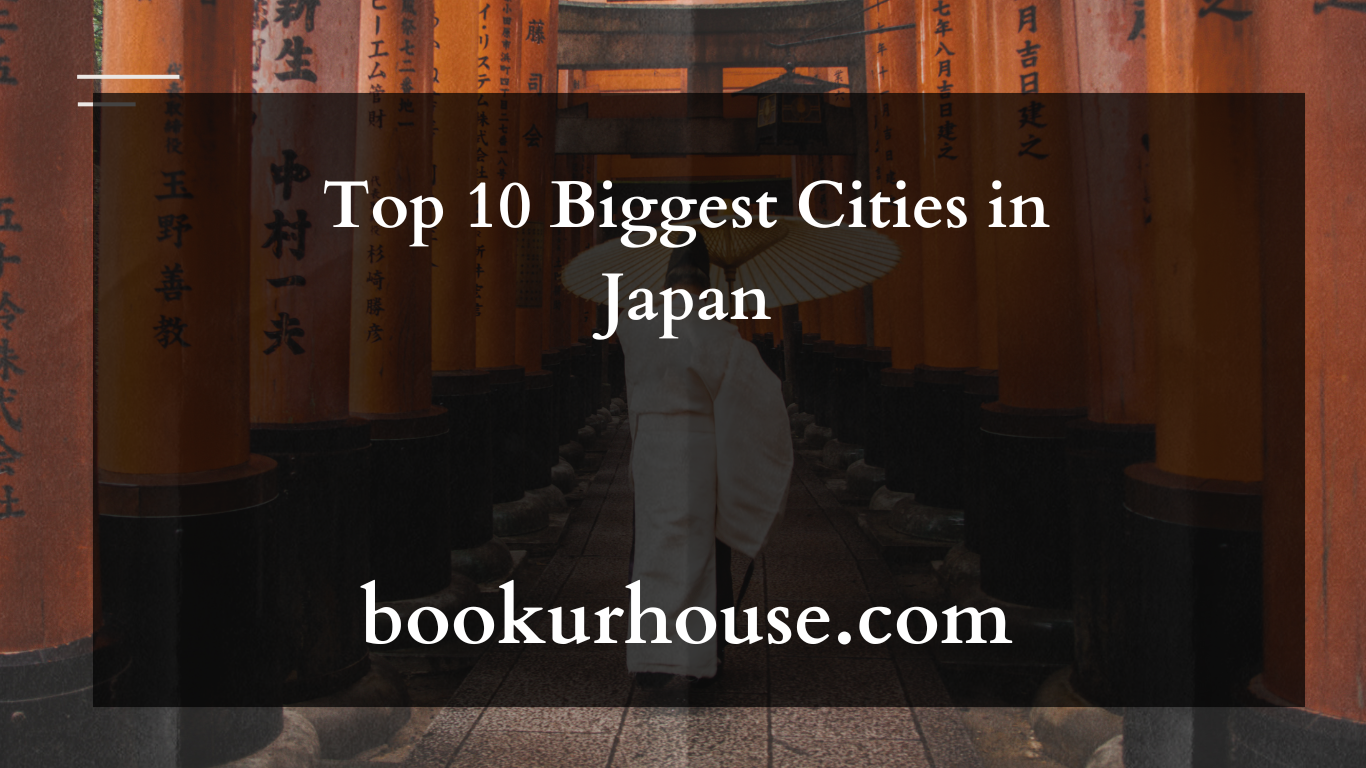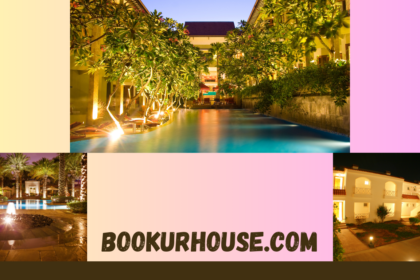Japan, known for its mechanical wonders, rich social legacy, and stunning scenes, is home to probably the most lively and clamoring urban communities on the planet. From Kyoto’s tranquil roads to Tokyo’s cutting-edge horizon, every city offers a unique mix of custom and innovation, making Japan an intriguing objective for voyagers and fans. In this article, we set out to investigate the Top 10 Biggest Cities in Japan, diving into their experiences, culture, and importance in forming the country’s character.
Here, we are talking about the Top 10 Biggest Cities in Japan:
Tokyo: The Megacity Marvel
Transcending high rises, clamoring roads, and throbbing energy characterize Tokyo, Japan’s capital and biggest city. With a populace surpassing 13 million, Tokyo demonstrates Japan’s monetary ability and social dynamism. From Asakusa’s memorable cities to Shibuya and Shinjuku’s stylish neighborhoods, Tokyo offers a kaleidoscope of experiences, from customary tea services to state-of-the-art innovation exhibits. As the focal point of Japan’s political, financial, and social undertakings, Tokyo keeps enthralling the world with its unrivaled energy and development.
Yokohama
Settled along the beautiful shore of Tokyo Sound, Yokohama arises as a signal of metropolitan complexity and sea legacy. As Japan’s second-biggest city, Yokohama flawlessly mixes memorable milestones like the Yokohama Chinatown and Sankeien Garden with cutting-edge attractions, for example, the notable Milestone Pinnacle and Minato Mirai 21 complex. Famous for its global port and cosmopolitan vibe, Yokohama fills in as a passage to the world, greeting guests wholeheartedly and a heap of social enjoyment.
Osaka: The Culinary Capital
Famous for its luscious food and lively road culture, Osaka remains a gastronomic heaven and business center in western Japan. With a populace surpassing 2.6 million occupants, Osaka throbs with irresistible enthusiasm, drawing food devotees, customers, and diversion searchers from all over. From the clamoring food slows down of Dotonbori to the memorable Osaka Palace, the city offers a rich embroidery of encounters that commend its distinguished past and dynamic present.
Nagoya: Modern Development Hub

Arranged in the core of the Chubu locale, Nagoya sparkles as a signal of modern development and social legacy. As Japan’s fourth-biggest city, Nagoya flaunts a vigorous assembling area, home to auto goliaths like Toyota and Mitsubishi. Past its modern ability, Nagoya allures explorers with its astonishing attractions, including the splendid Nagoya Palace, the energetic Osu Kannon shopping locale, and the charming Atsuta Shrine. With a populace surpassing 2.3 million occupants, Nagoya continues flourishing as a lively focus of trade, culture, and innovativeness.
Sapporo: A Winter Wonderland
Settled amid the immaculate scenes of Hokkaido, Sapporo entices voyagers with its captivating mix of regular excellence and metropolitan appeal. As Japan’s fifth-biggest city, Sapporo spellbinds guests with its undeniably popular Snow Celebration, held yearly in February, and its flavorful culinary pleasures, including exquisite dishes of miso ramen and new fish delights. With a populace surpassing 1.9 million occupants, Sapporo fills in as a door to Hokkaido’s staggering wild, offering outside lovers sufficient chances for skiing, snowboarding, and climbing amid stunning vistas.
Fukuoka: The Gateway to Kyushu
In southwestern Japan, Fukuoka is a lively city and social mixture on the northern shoreline of Kyushu island. With a population surpassing 1.6 million, Fukuoka flaunts a rich history over a thousand years, confirmed by its old sanctuaries, clamoring markets, and conventional celebrations. Prestigious for its vibrant nightlife, flavorful food, and warm neighborliness, Fukuoka radiates a laid-back engagement that captivates guests to investigate its unlikely treasures and lively areas.
Kawasaki: Industrial Powerhouse
In the More prominent Tokyo Region, Kawasaki remains a unique modern force to be reckoned with and a private center point in Kanagawa Prefecture. With a populace surpassing 1.5 million occupants, Kawasaki is crucial in Japan’s assembling and innovation areas, facilitating large companies like Kawasaki Heavy Businesses and Toshiba. Past its modern foundation, Kawasaki offers a different exhibit of social attractions, including the dazzling Kawasaki Daishi Sanctuary and the vivid Anata no Warehouse arcade, making it a convincing objective for explorers looking for innovation and custom.
Kobe: Port City Splendor
Settled along the beautiful shores of Osaka Bay, Kobe charms guests with its pleasant harbor, cosmopolitan mood, and culinary pleasures. As Japan’s eighth-biggest city, Kobe flaunts a rich oceanic legacy, represented by its notable waterfront and iconic Kobe Port Tower. Eminent for its delicious Kobe hamburger, lively Chinatown, and picturesque Mount Rokko, Kobe offers an abundance of encounters that commend its novel mix of normal magnificence and metropolitan complexity.
Kyoto: Timeless Tranquility
Saturated with history and custom, Kyoto dazzles guests with its immortal excellence, peaceful sanctuaries, and staggering nurseries. As Japan’s social heartland and previous majestic capital, Kyoto safeguards many UNESCO World Legacy locales, including the notable Kinkaku-jiTemple and Fushimi Inari Shrine. With a populace surpassing 1.4 million occupants, Kyoto demonstrates Japan’s rich social legacy, welcoming voyagers to submerge themselves in the excellence of its old ceremonies, choice craftsmanship, and profound peacefulness.
Saitama: Rural Serenity
Encompassing the clamoring city of Tokyo, Saitama offers a serene rest from the metropolitan hurrying around, with its beautiful scenes, notable sanctuaries, and family-accommodating attractions. As Japan’s 10th biggest city, Saitama exemplifies a laid-back beguile that requests to nature sweethearts, history buffs, and families the same. From the beautiful vistas of the Chichibu Mountains to the memorable roads of Kawagoe, Saitama welcomes voyagers to investigate its secret fortunes and appreciate the basic joys of rural life.
FAQs
What are the top 10 most significant cities in Japan?
Tokyo, Yokohama, Osaka, Nagoya, Sapporo, Fukuoka, Kobe, Kawasaki, Kyoto, and Saitama are the top 10 biggest cities in Japan.
Which city is the largest in Japan?
Tokyo is the largest city in Japan, both in terms of population and area. It serves as the capital of Japan and is one of the most populated cities in the world.
What are some major attractions in these cities?
Significant attractions in these cities include historical landmarks, cultural sites, modern skyscrapers, shopping districts, parks, and museums. For example, Tokyo offers attractions such as the Tokyo Tower, Shibuya Crossing, and Meiji Shrine, while Kyoto is famous for its temples, gardens, and traditional tea houses.
What is the population density like in these cities?
The population density in these cities can vary greatly, with Tokyo being one of the world’s most densely populated urban areas. Other major cities like Osaka and Nagoya also have high population densities due to their large populations and limited space.
What are the primary industries in these cities?
These cities are home to diverse industries, including finance, technology, manufacturing, tourism, and services. Tokyo, for example, is a central financial and business hub, while Osaka is known for its manufacturing and commerce.
What transportation options are available in these cities?
These cities have extensive transportation networks, including trains, subways, buses, and taxis. Tokyo, in particular, has one of the world’s most comprehensive and efficient public transportation systems, including the famous Shinkansen bullet trains.
Are there any notable cultural events or festivals in these cities?
Yes, these cities host various cultural events and festivals throughout the year. For example, Tokyo hosts the famous cherry blossom festival (hanami) in spring, while Kyoto holds traditional tea ceremonies and cultural performances.
What are some challenges faced by these cities?
Some challenges these cities face include urban sprawl, congestion, pollution, and aging populations. Efforts are being made to address these challenges through urban planning, infrastructure development, and sustainable initiatives.
Are there any famous landmarks in these cities?
Yes, these cities are home to many famous landmarks, such as Tokyo Tower, Osaka Castle, Nagoya Castle, Sapporo Clock Tower, Fukuoka Tower, and Kobe Port Tower.
What makes these cities unique compared to other cities in Japan?
These cities are Japan’s economic, cultural, and political centers, each with distinct character and attractions. They offer diverse experiences, from bustling city life to historical sites and natural beauty.
Conclusion
Overall, Japan’s 10 central urban communities offer a spellbinding look into the country’s rich embroidery of culture, history, and development. From the clamoring roads of Tokyo to the serene sanctuaries of Kyoto, every city winds around its extraordinary story, welcoming voyagers to set out on an excursion of disclosure and investigation. Whether you’re attracted to the large city’s splendid lights or the open country’s tranquil scenes, Japan’s metropolitan goliaths guarantee an extraordinary encounter that will leave you captivated and motivated long into the future.












